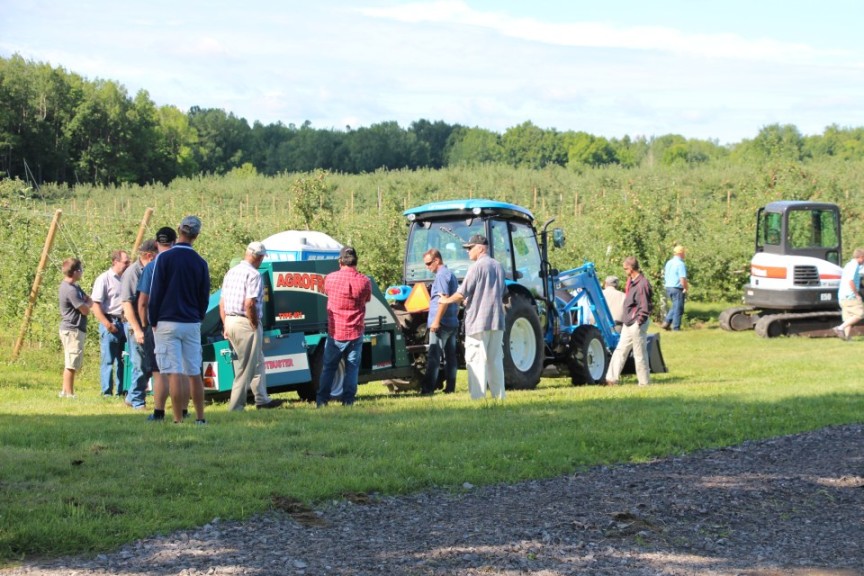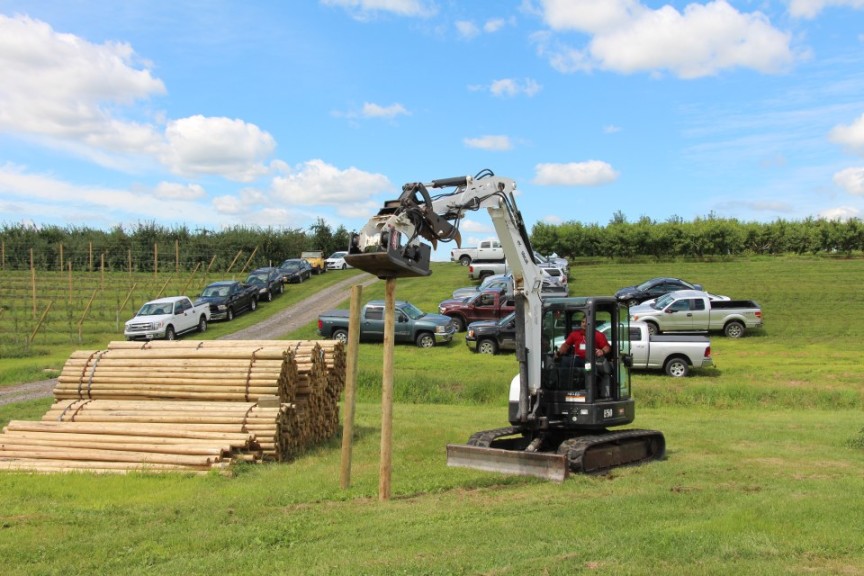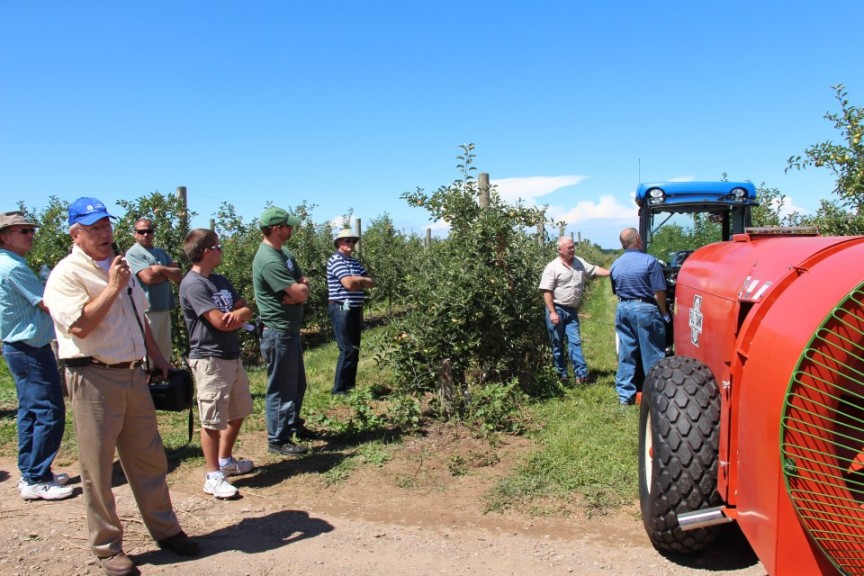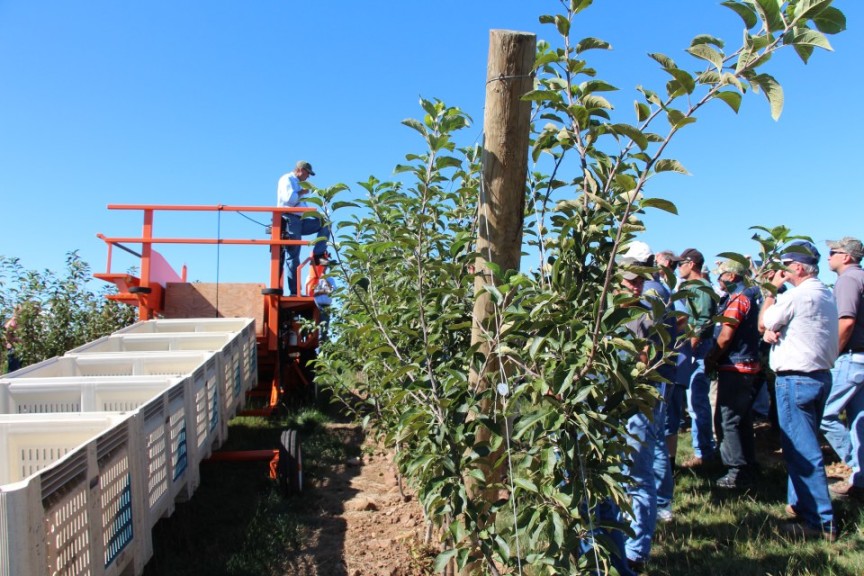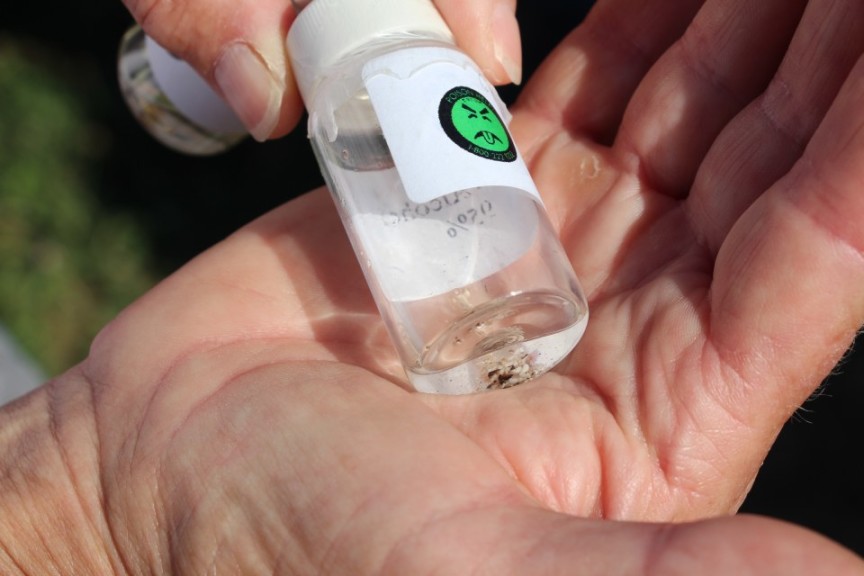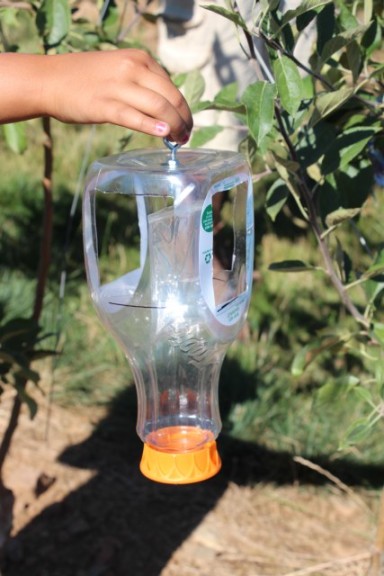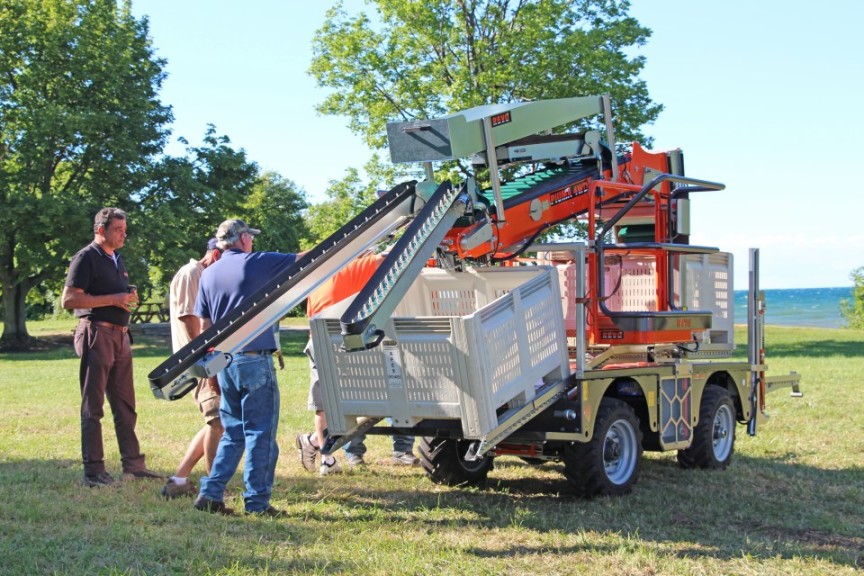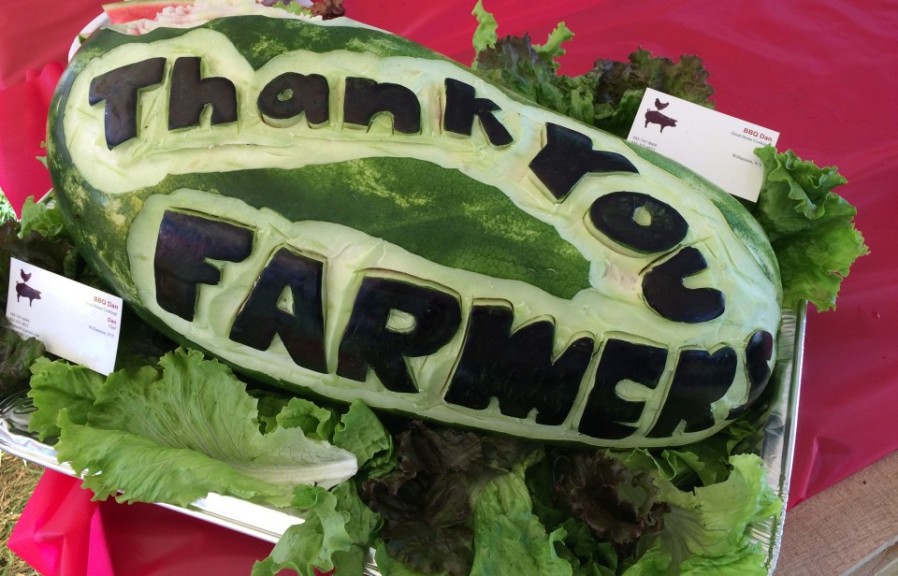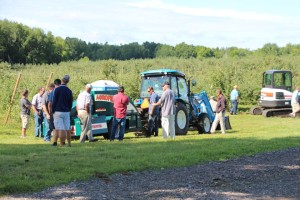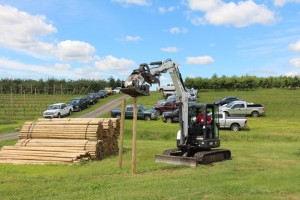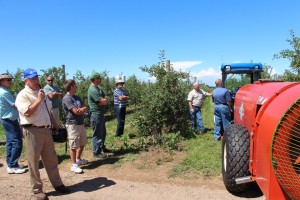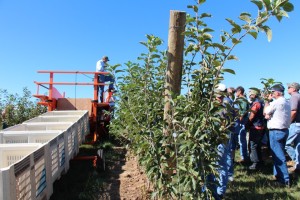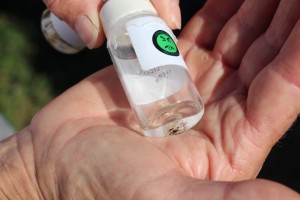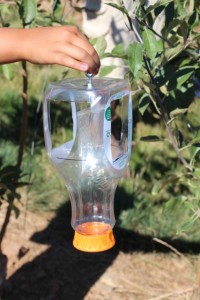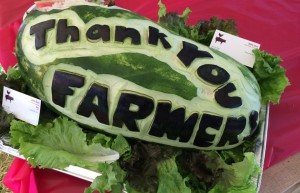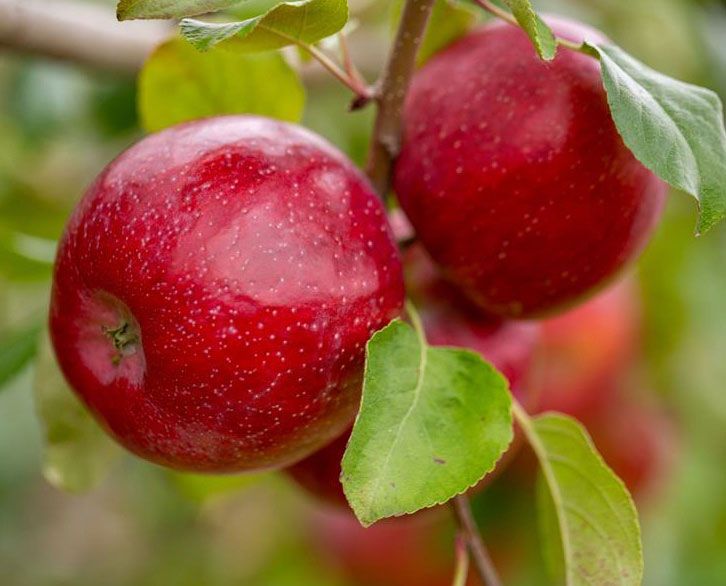Mother Nature’s Fury The Focus Of Annual Fruit Tour
[blackoutgallery id=”77060″]
“(The trouble of) 2015 was to a large degree my fault. We had the nicest spring early on. There just wasn’t much you could do,” says Jeff Alicandro of Agr.Assistance as he opened the 17th annual Wayne County (NY) Fruitgrower Tour.
However, Alicandro said he went to visit his family in New Jersey Mother’s Day weekend and temperatures hit 90°F and there was rain.
“What I learned is I can’t leave you guys for more than 20 hours because it all goes to hell,” he says.
This is a lot of what the season of 2015 has brought for fruit growers in the Finger Lakes region of New York – perfect spring prior to pollination, frost, heat, and rain. It’s the trouble with doing business with Mother Nature.
Themes throughout the day hit on topics such as fertility, fire blight in RubyFrost (NY-2), the use of PGRs in frost control, and hard cider.
While at the first stop, Wilbert’s Fruit Farm in Walworth, NY, David Wilbert said that his PGR and fertility program has helped his biennial varieties.
“We’ve had the same crop three years in a row when we used to have blank trees every other year,” he said.
Alicandro encourages growers to focus on fertility as well as PGRs.
“You can put PGRs on all the trees you want, but if your fertility levels are low, you won’t get the result you want,” he says.
Alicandro also talked about how he’s used Promalin (Gibberellins 4 and 7 and 6-Benzyladenine, Valent) and Perlan (Gibberellins A4 and 7 and 6-Benzylaminopurine, Fine Americas) to help trees recover after a frost episode.
He said he used this recipe in his daughter and son-in-law’s orchard and it was apparent how their orchard survived where neighboring orchards did not. This recipe, though, doesn’t help reduce frost scarring. But, the products provide hormonal signals where seeds would be in a normal growing apple.
“It’s amazing to me how they keep the apples growing,” he says. “Weather uncertainty is something we can plan on. Everybody has frost pockets or valuable varieties you want to protect.”
While at the second stop (Lagoner Farms in Williamson, NY), growers learned how Mark and Jake Lagoner transitioned from a processing apple orchard to retail and direct marketing. The Lagoners recently opened Embark Craft Cider Works – June to be exact.
The Lagoners began to explore other ways to generate revenue on their farm after New York passed a farm cidery law.
“We thought we’d try it and see how it works out,” says Mark Lagoner.
Cider varieties are a bit of a mystery in New York. With many prone to fire blight and with misunderstanding of what varieties to plant, Mark Lagoner estimates it’ll take 10 years to know exactly which varieties will work out. But, a bonus with cider apples is that cosmetics aren’t a concern so copper sprays can be used much more thoroughly.
“Let me get this straight, 10 years ago you pushed out greening (varieties), grafted over to fresh apples, and now you’re grafting those over to greenings again,” Alicandro quipped.
Alicandro also warned growers to watch out for apple scab.
“I was always told to watch out for scab, especially in a dry spring,” he says.
Growers are always aware of the need to spray in wet springs. But, in a dry spring, growers often try to stretch their sprays out because they the conditions lull them into thinking they can stretch out the spray intervals.
If you think you’ve got good spray coverage, think again, Alicandro says.
“I don’t think anyone has the spray coverage they think they do,” he says.
He recommends at the end of the season, growers should purchase some Surround (kaolin clay spray, NovaSource) to add to a sprayer to calibrate sprayer efficacy.
“Spray at different speeds with different nozzles,” he says.
Alicandro said some orchards that calibrated their spray coverage had no evidence of apple scab – in a high scab year, simply because they took the time to check their spray coverage.
At Jay DeBadts & Sons in Sodus, NY, the challenges of NY-2 (RubyFrost) and NY-1 (SnapDragon) were discussed.
“We’re going to have to keep covering for fire blight until mid-September,” said Alicandro of RubyFrost, which is very susceptible to fire blight.
SnapDragon, if grown nearby RubyFrost can also fall victim to infection he says. SnapDragon, can be a challenge to get growing.
“SnapDragon is a different breed when you deal with it in the orchard. It wants to put a flower bud on the tip,” says Bill Pits of Wafler Nursery.
Pits recommends aggressively heading the trees to encourage more growth from the beginning and get deeper, stronger branches. Rootstock helps play a big part in how SnapDragon performs, growers need to choose more productive rootstocks like G.935 and M.26.
Also at Jay DeBadts & Sons, Deborah Breth, the IPM team leader for Cornell Cooperative Extension talked about the second year studying the black stem borer. This ambrosia beetle is very attracted to ethanol, which is why Cornell University is testing lures with 15% ethanol.
Stressed trees give off ethanol, which makes them even more susceptible to the pest.
Based on preliminary recommendations, Breth says growers should focus on pre-bloom control of the borer because the best spray coverage on trees without foliage. Once the beetles penetrate the bark, they are no longer susceptible to sprays.
Site selection also factors into control of this new pest.
“It is important to be picky with land – no wet spots, no weed coverage, and manage fire blight and frost control,” she says.





